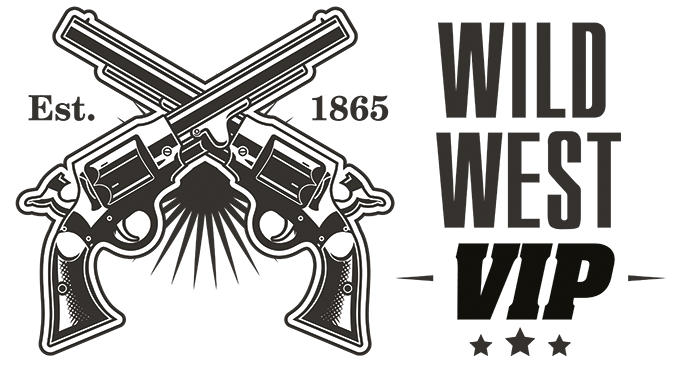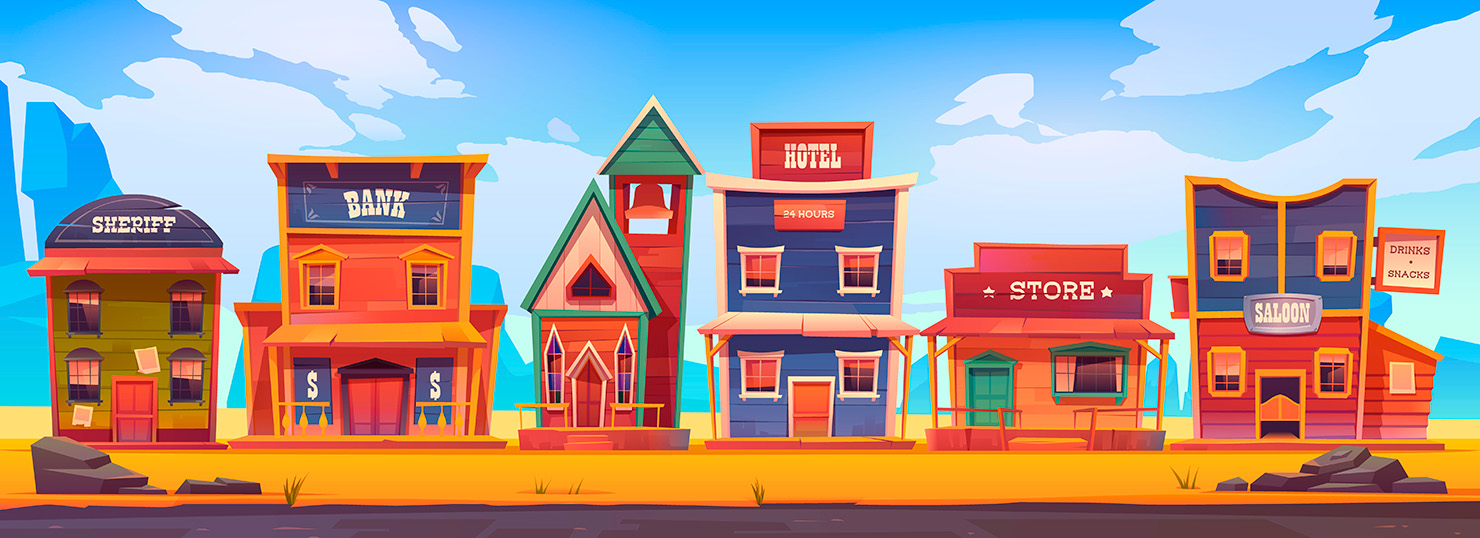A prequel to one of the best Western games of all time, Red Dead Redemption 2 throws you in at the brunt end of life as a cowboy. Not that RDR2 is without whisky swilling, tavern brawls, or nights camping under the stars, but we now see another side to this scrappy way of living. You play as Van der Linde gang member Arthur Morgan and right-hand man of Dutch, the baleful leader of the outlaw gang. The murky morality the gang embraces in order to survive in a world that no longer accommodates their lifestyle is constantly tested across this epic tale – unlike many Western games, RDR2 looks at the American frontier in transition, and that’s brilliantly reflected in the downtrodden Van der Linde gang.
In Red Dead Redemption 2, you’ll learn how to be a cowboy, but along with taming horses and bounty hunting, you’ll also have to learn how not to be a cowboy and survive in a world that is slowly abandoning your lifestyle. But there’s unparalleled freedom in Rockstar’s open world, it’s a place where you can lasso escaped outlaws and lay them on railway tracks like a pantomime villain, get drunk at saloons and start a town-wide brawl, and ride through the dry, dusty plains shooting deer for dinner.
America, 1899. The end of the wild west era has begun as lawmen hunt down the last remaining outlaw gangs. Those who will not surrender or succumb are killed.
It’s 1899 and American outlaws are an endangered species. Dutch van der Linde and his gang are on the run after a botched heist in the growing town of Blackwater and they’ve retreated high into the mountains where an atrocious blizzard is covering their escape. We slip into the spurs of Arthur Morgan, an exceedingly cool and capable outlaw who was found by Dutch as a boy and raised on the wrong side of the law, and settle in for a roughly 60-hour story.
It’s a self-contained and linear introduction but it’s a clever one. The slick cinematics make a hell of first impression, embedding you in the gang and bringing you right up close to the characters who are doing their best to bellow over the howling wind. It also placed me in a distraction-free bubble while I learned some of Red Dead Redemption 2’s early controls and systems, which heightened the impact of having the full map open up to me a few hours later. The conditions on the mountain are almost claustrophobic, with visibility at a premium and thick snow trapping Arthur’s feet. Being set loose in the true open world after toughing it out in this intentionally oppressive environment really underscores the incredible feeling of freedom the full map offers.
The Big Country
And what a world it is; broader, more beautiful, and more varied than the one we explored in 2010’s Red Dead Redemption by a massive margin (though parts of that game’s map are also included). There are snowy peaks and dank, alligator-infested swamps. Thick forests and open plateaus. Quaint homesteads and grand plantations. Narrow streams and great lakes. Dusty gulches and dim caves. There’s the muddy livestock town of Valentine, with its wooden buildings and rustic charm, and then there’s the imposing city of Saint Denis, a grimy and growing metropolis full of modern extravagances like electric trams, paved roads, and Chinese restaurants. The vast assortment of ecosystems and environments seamlessly stitched together here is nothing short of remarkable.
Red Dead Redemption 2 does an exceptional job at slowly rationing out reasons to visit every corner of its huge world, too. I was still led to areas of the map I hadn’t yet visited even in the closing stages of its 60-hour main storyline. Because so many cards are kept up its sleeve, the joy of discovering new parts of the world is maintained throughout.
The ability of this game to keep itself fresh after so many hours is extraordinary, and not entirely due to just the size and diversity of the world; it’s how alive all of those places feel. While the largely rural world of Red Dead Redemption 2 is far less dense than the likes of Grand Theft Auto V, it’s absolutely brimming with wildlife to discover, people to interact with (and potentially help), and places to scrutinise. The best kind of open worlds are those that seem almost indifferent to your presence in them; like life goes on whether you stick your nose into proceedings or not. I’ve sat and watched lumberjacks felling trees at a bustling logging camp and curiously tailed a perturbed Englishman wandering around town looking for his mate “Gav.” None of this is crucial to the progression of Arthur’s story; it just helps build a world around him that made me feel like a visitor rather than the centre of the universe. Red Dead Redemption 2 nails this in a way that few – if any – games have before.
In a Valley of Violence
The slower pace of Red Dead Redemption 2 compared to something like the slightly more breakneck GTA V is also a big part of how it encouraged me to drink in all the world has to offer. Bodies have to be manually looted, and Arthur needs to physically manhandle a body to do so. Single-action pistols need to be cocked before firing. Guns Arthur isn’t currently carrying need to retrieved from his saddle. Coffee needs to be brewed before drinking it.
I suspect some folk may regard this sort of stuff as chore-like, but I really dig it. There’s something methodical about it that really helps ground Arthur in the world, rather than have him feel like he’s gliding through it. For instance, I love the deliberate and mechanical process of cycling a new cartridge with a lever-action rifle via a second pull of the fire button – you can even pause for dramatic effect halfway through. Rockstar’s designers didn’t need to factor that in but I think they understand that tiny, almost trivial instances of subtle control like this subconsciously seat me into the world as Arthur even more.
How the West Was Won
The main story missions themselves are a cocktail of high-stakes heists, deadly shootouts, desperate rescues, and thrilling chases, mixed with a lengthy list of other activities. Many of those function as organic ways to teach us about new side hustles and activities that can be undertaken, from selling stolen horses to playing poker or fishing.
It all feels great to play, similar in a lot of ways to its immediate predecessor but injected with a pile of new animations and multiple layers of interactivity. It asks a lot of the finite amount of buttons on a controller, but once I became accustomed to which commands require a tap and which require a press-and-hold I had few hassles. Shootouts are supremely cinematic thanks to plenty of gun smoke and the same style of on-the-fly, ever-changing death animations that have characterised Rockstar games since GTA IV. You can even shoot off people’s hats and pick them up later for yourself.
I think there’s a common presumption that Red Dead Redemption is just GTA on a horse, but that’s a bit reductive. Certainly the GTA DNA is here, but with far more primitive firearms at your fingertips gun battles are more intimate and anarchic. I love the close range clashes, hunkered down behind bits of cover exchanging lead with enemies often just yards away, or slugging it out in bareknuckle scraps. It’s exciting and fun. Combat from horseback is equally well-handled and it’s always a grisly highlight to watch unfortunate saps go limp and tumble from the saddle in a seemingly endless number of ways. I think Arthur feels a fraction heavier than any of the GTA V trio, but I would not say that I found his movement cumbersome. I really like how connected Arthur feels to the world. I’m not a particular fan of that old-school, skating third-person feel – like the player character has no inertia – and that’s certainly not present here.Dead Eye returns, naturally, as it’s been part of the series since Red Dead Revolver. It’s had some upgrades this time, the most useful of which highlights critical hit areas on a target (very useful for clean kills while hunting). It’s still a very effective way to make you feel like an unstoppable gunslinger and the gruesome ballet of slow-motion death-dealing remains disturbingly satisfying.
I didn’t engage much with the available camp upgrade options – not the aesthetic ones, at least. There are some practical upgrades I acquired that had gameplay benefits attached, like a boat to go fishing in or a map at Arthur’s quarters that unlocks fast travel. I don’t feel like I missed much by opting out of purchasing animal skulls and rugs and such. This stuff feels a little more like a primer for Red Dead Online, the multiplayer component coming at an unspecified later date.
I chose not to do a huge amount of crafting, either, and I was never really punished for it. You can craft tonics and satchels, and recipes can be discovered throughout the course of the story. However, I mostly made it through on purchased items, restocking in camp, and religiously ransacking dead bodies for liquor, health tonics, and cigarettes. (I created a lot of dead bodies.)
Two new elements I did take quite seriously were horse bonding and the honour system. The former is an inspired method of making you treat your horse with realistic respect instead of riding the poor thing off cliffs or parking it on train tracks for giggles. All horses are unique, and only the ones that trust Arthur can be relied upon to stay calm and not kick him off in the face of a predator or in a gun battle, and that trust is built by riding, brushing, and feeding it. I liked having to click in the thumbstick to reassure my horse when he was scared – it makes him feel real and establishes a physical-to-digital bond between you two. Your horse can die, too, and there’s no bringing him or her back if that happens. I kept the same horse from early in the game all the way to the finale and was truly attached to that big guy. Some of the other folk here have been less lucky and have had to endure the gut punch of euthanising their equine comrade (always pack some horse revivers, people).
Meanwhile, Arthur’s personal honour is something that’s in the background at all times, rising and falling based on his actions in the world. In practical terms, being an outlaw who refrains from killing in cold blood and who helps regular folk around the world gets you discounts in shops and generally means you won’t have to look over your shoulder quite as often for bounty hunters and lawmen. Playing through as a vicious monster is also possible, although it’s not entirely clear to me whether there’d be some dissonance between that approach and Arthur’s actual story. I still need to investigate further, but I’m really happy with how my playthrough turned out and the outlaw-with-a-soft-side Arthur I chose to inhabit.
Source: https://www.ign.com/articles/2018/10/25/red-dead-redemption-2-review

